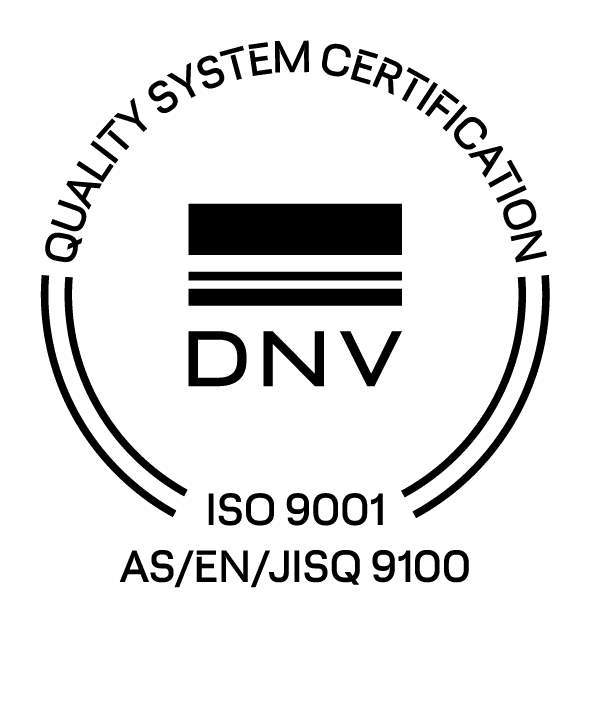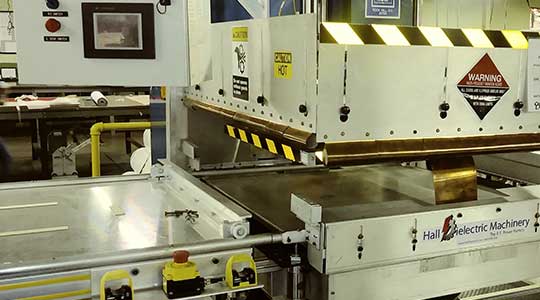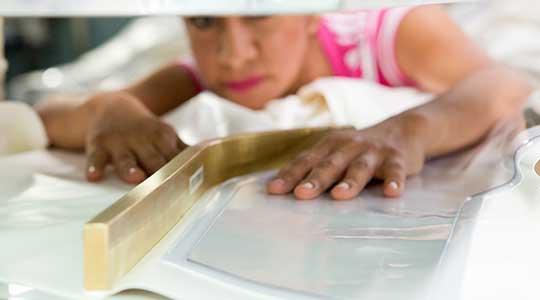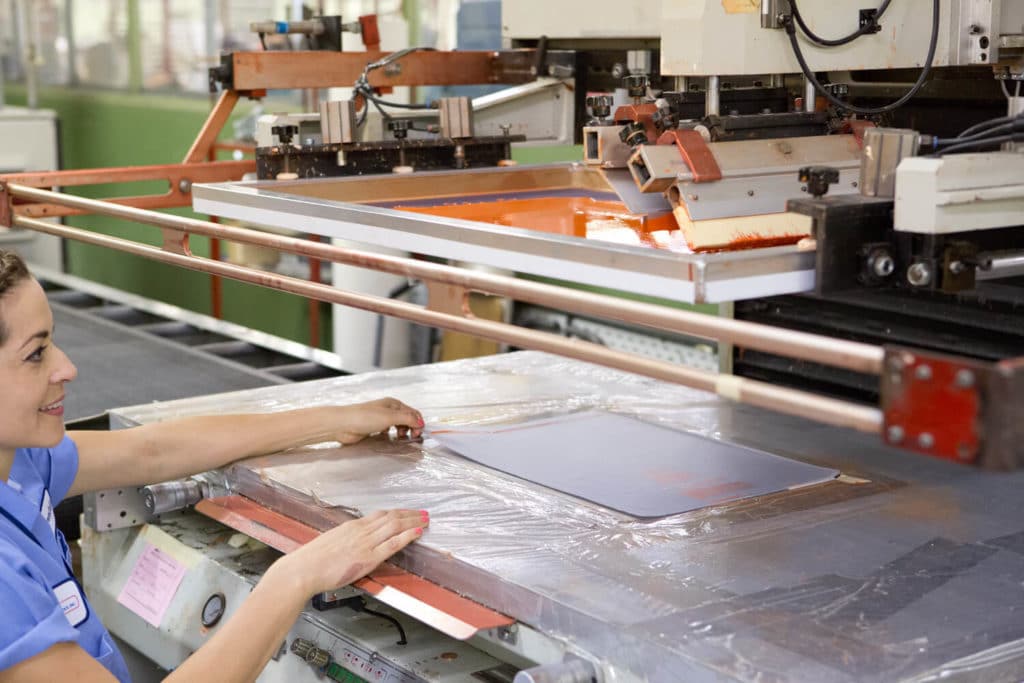RF Welding & RF Sealing
VTI utilizes a technology called RF welding or Dielectric welding. This is a process utilizing radiofrequency waves to weld two films or fabrics together on a molecular level creating a hermetic bond.
What is Dielectric Sealing, RF Sealing, or Heat Sealing
This is a process that’s known by many names, and you might have heard one of the other terms for the process: dielectric sealing, RF sealing, RF welding, heat sealing. They all describe the same high-tech method of joining thermoplastic films using Radio Frequency (RF) energy. Those RF waves excite the molecules of the materials to be joined from the inside out, fusing the materials together. It doesn’t leak either air, moisture, water, or fuel, depending on your application.
No Heat Required
Though you might hear “heat sealing” used to describe this process, it’s not entirely accurate. There is no heat involved in the process of RF Welding. This is not a table-top heat sealer you might use to close a bag of chips or preserve your leftovers–RF Welding is a molecular process, binding two materials with a seal much stronger than whatever any household appliance can do.
Using Dies for Heat Sealing and RF Welding
An important component of any RF welding apparatus is the die that is used in heat sealing. The basic design of heat sealing dies consists of a solid, flat lower platen. The die is comprised of one or more bars made of brass that are shaped into the desired seal shape.
The heat sealing dies are placed over a sleeve or other material that needs to be sealed and then, in the case of heat sealing, heated to a high temperature. The time and RF settings are set on the machine and the process begins. After the material has been sealed, the product can be removed and a new material can be placed onto the platen.
The dies used for heat sealing and RF welding should be of high quality. The die should be durable, able to resist wear and tear, and be resistant to rust.
What is PVC Sealing
PVC sealing is a high frequency welding process that allows for the application of PVC (Polyvinyl Chloride) to a soft fabric or film. PVC has the advantage of being light weight, durable, and abrasion resistant and is often used in waterproofing fabrics. PVC is considered to be an excellent material for radio-frequency welding because of its strong dipolar moment and other chemical properties. PVC Welding refers to a similar process whereby PVC is the material of choice when welding together fabrics, plastics, or other materials together.
What is HF Welding
HF welding is another term used for RF sealing, and is used interchangeably. Both terms are used to describe the process of using high-frequency radio waves to bind two thermoplastic materials together. Another term used to describe this process is RF heating, HF heating, and dielectric sealing.
How RF Welding Works
Radiofrequency energy is directed through electrodes custom-built to the required shape usually through the use of a tool. This makes RF Sealing the most versatile of the polymer film sealing methods. RF sealing and heat sealing use a precise combination of time, pressure, and RF waves to form a stronger, more uniform weld than is possible using other methods.
Not all polymers can be dielectrically sealed. Acceptable materials include vinyl (PVC), ether and ester-based polyurethanes (PU), and chlorinated polyethylene (CPE). These materials are often coated or laminated onto substrates (fabrics like polyester, nylon, etc.) for additional strength and versatility. Custom laminations may also be developed unique to your required application.
Essentially, RF Welding works through a five-step process:
- Loading Parts: Joint member is placed into the welding machine to undergo RF heat sealing.
- Pressure Application: Pressure is applied to the joint member through electrodes. Pressure describes force applied to an area and in this case a fixed electrode at the bottom requires an actuator to drive the upper electrode downwards with the prescribed force.
- Electrical Field Application: At this point, an electrical field is applied for a designated amount of time while pressure is maintained throughout the process.
- Holding Pressure: As pressure is continually applied along with the electrical field, the portions of the joint member directly in contact with the equipment will melt and the liquid polymers will diffuse into each other at the respective points of contact.
- Unloading Parts/Cooling: This process engages through a chemical process of diffusion and solidification to “weld” the members together. At this point, after the joint cools down, the upper electrode is now brought back and parts are unloaded.
In other words, dielectric sealing is the process of joining thermoplastic films using Radio Frequency (RF) energy to excite the molecules of the materials to be joined from the inside out, fusing the materials together. The RF energy is directed through electrodes (dies) custom built to the required shape of the seal or weld. This makes RF Sealing the most versatile of the polymer film sealing methods. It is different than your ordinary kitchen bag sealer in that it does not simply use heat and pressure to melt and join materials.
What You Get with VTI
Certifications
Vinyl Technology, Inc. complies with standards required by the US government and Department of Defense that include the National Institute of Standards and Technology (NIST), The International Traffic in Arms Regulations (ITAR), Defense Federal Acquisition Regulation Supplement (DFARS) to the Federal Acquisition Regulation (FAR), STANAG 4671 and MIL-STD-6396. VTI can also fabricate products that comply with the Berry Amendment when required.
VTI’s Quality System is currently certified to AS9100D and ISO9001:2015. Since 2014, VTI has implemented LEAN Manufacturing practices, Six Sigma, and Kaizen methodologies to improve operations. VTI is an FDA Registered Manufacturer for medical products.





Materials
VTI has been challenged with a number of different textiles for different applications. These are not the common garment fabrics so expertise is critical. We work a wide range of material types including stiff coated materials, soft and stretchy, chemical resistant, fire-resistant, laminated for weather resistance, and more.
Commonly used materials include:
- Mil-Spec Materials
- Polyurethane Coated Fabrics
- Vinyl Coated Fabrics
- Webbing
- Fabrics
- Netting
- Hook and Loop
Why Certain Materials are Better for RF Welding and PVC Sealing
Polarity or the separation of electric charges in a molecule lead to electric dipole moments where there is a negative and positive charged end. Because of how RF welding and PVC sealing work, materials with strong dipole moments – like PVC – are more suitable for the RF welding process.
Other contributing factors:
- High Dielectric Constant: Influences current resistance
- High Dielectric Loss: Influences heat generation by the electric field.
- High Dielectric Strength: Affects arcing through joint members during the sealing process.
Heat Seal Plastic Film
Vinyl Technology Industries is a heat seal plastic film manufacturer. Fluoropolymer films such as perfluoroalkoxy alkane (PFA) and polychlorotrifluoroethylene (PCTFE), are common examples of plastic films that can be heat sealed to form bags and pouches. The radio frequency welding of plastic films is advantageous for their stain-resistance and barrier properties.
Heat Welding Vinyl Fabric
The most popular instances of a heat weld most commonly involves PVC or Vinyl fabric. The advantages of heat welding in general is that it allows for better control over thin materials, is a fast material heating process, and that it helps it maintain an enhanced seal in both strength and appearance. With vinyl fabric, the advantages offered include fire retardant properties, oil and chemical resistance, and its high durability and strength.
Our RF Sealing Equipment
VTI currently has 40 RF sealing machines or thermatron RF welders and continues to add more, uniquely positioning us to meet the capacity and capability requirements of our most demanding customers. Models we use include standard platen machines, bar welders, dual cycle machines, and proprietary equipment with up to 48″ x 96″ seal area. High volume projects utilize shuttle and turntable configurations. RF Welding machines range in output from 4 to 50 KW.
Different Types of RF Welding Machines:
- Kabar
- Hall Dielectric Machinery
- Faratron
- Proprietary VTI
- Thermatron
- Fara-Dyne
- COSMOS




